India has a rich history of scientific achievements, with its scientists contributing significantly to global advancements in various fields. From physics to space exploration, Indian scientists have shaped the world in remarkable ways.
In this blog, we explore five commonly asked questions about Indian scientists, followed by a detailed look at the top 10 scientists of India who have made an indelible impact on the global stage.
What Contributions Have Indian Scientists Made to the World?

Indian scientists have made remarkable contributions in various fields of science, ranging from physics and space research to biology and statistics. One of the most notable discoveries is the Raman Effect, for which C.V. Raman received a Nobel Prize.
India’s space scientists, such as Vikram Sarabhai and A.P.J. Abdul Kalam, played significant roles in establishing India’s space program, contributing to satellite technology and missile development.
Indian scientists have made strides in:
- Physics (C.V. Raman)
- Space Science (Vikram Sarabhai, A.P.J. Abdul Kalam)
- Biology (J.C. Bose, Har Gobind Khorana)
- Statistics (P.C. Mahalanobis)
These contributions have placed India at the forefront of scientific research and innovation, with their discoveries impacting not just India but the world at large.
Who Is the Most Famous Scientist in India?
When discussing the most famous scientist from India, C.V. Raman often tops the list. He is known for discovering the Raman Effect in 1928, a breakthrough in understanding the scattering of light.
This discovery earned him the Nobel Prize in Physics in 1930, making him the first Asian to receive this prestigious award in the field of science.
Other notable mentions include A.P.J. Abdul Kalam, known for his work in missile technology and space research, and Homi J. Bhabha, who is considered the father of India’s nuclear program.
Famous Indian scientists include:
- V. Raman (Nobel Prize in Physics)
- P.J. Abdul Kalam (Missile development)
- Homi J. Bhabha (Nuclear program)
These scientists’ groundbreaking work continues to influence the world of science today.
What Fields of Science Are Indian Scientists Known For?

Indian scientists have made significant contributions across a wide range of scientific disciplines, excelling in fields such as physics, mathematics, space science, biology, and statistics.
Their work has not only advanced scientific knowledge in India but also had a profound global impact. In physics, figures like C.V. Raman revolutionized the understanding of light scattering, while Vikram Sarabhai is credited with establishing India’s space research capabilities, laying the foundation for the country’s ambitious space program.
Meanwhile, in mathematics, the self-taught genius Srinivasa Ramanujan made groundbreaking discoveries in number theory and infinite series, shaping modern mathematical thought.
In the realm of biology, Har Gobind Khorana decoded the genetic code, a breakthrough that transformed molecular biology and biotechnology. In statistics, P.C. Mahalanobis developed statistical tools and methodologies that continue to influence large-scale data analysis.
How Have Indian Scientists Contributed to Space Exploration?
India’s remarkable achievements in space exploration can be traced back to the visionary contributions of scientists like Vikram Sarabhai and A.P.J. Abdul Kalam.
Vikram Sarabhai, often regarded as the father of India’s space program, was instrumental in founding the Indian Space Research Organisation (ISRO), with a focus on using space technology for societal development.
Under his leadership, India launched its first satellite, Aryabhata, in 1975, marking the country’s entry into the space age.
Building on Sarabhai’s vision, A.P.J. Abdul Kalam played a crucial role in the development of India’s satellite launch vehicles (SLV-III) and missile technology, including the Agni and Prithvi missile systems, which solidified India’s defense and space capabilities.
What Role Do Indian Scientists Play in Today’s World?

In today’s rapidly evolving scientific landscape, Indian scientists continue to make significant contributions to global advancements across various fields.
They are at the forefront of cutting-edge research in genetics, biotechnology, and information technology, driving innovations that impact industries worldwide.
Through esteemed institutions like ISRO and the Bhabha Atomic Research Centre (BARC), India remains a leader in space exploration and nuclear energy research, continuously pushing the boundaries of technology.
Additionally, Indian scientists are actively involved in global collaborations, contributing to solutions for climate change, healthcare, and artificial intelligence.
Areas where Indian scientists are contributing today:
- Biotechnology
- Space technology
- Nuclear energy
- Information technology
- Artificial intelligence
- Renewable energy
These advancements highlight India’s vital role in the global scientific community and underscore the country’s growing influence in shaping the future of science and technology.
Top 10 Scientists of India
1. C.V. Raman
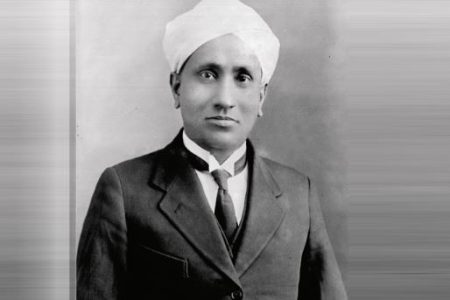
Image – Source
C.V. Raman is one of India’s most distinguished scientists, celebrated for his monumental discovery of the Raman Effect, which explains the scattering of light when it passes through a medium.
This breakthrough revolutionized the field of optics and earned him the Nobel Prize in Physics in 1930, making him the first Asian to receive this honour in the field of science.
Raman’s early interest in acoustics also led to significant contributions to understanding the sounds produced by musical instruments.
His keen passion for research and his advocacy for scientific education led him to establish the Indian Academy of Sciences.
Raman’s legacy remains strong, with numerous scientific institutions and awards named after him, a testament to his lasting impact on Indian and global science.
Here are some key highlights of C.V. Raman’s achievements:
- First Indian to win the Nobel Prize in Physics.
- Discovered the Raman Effect in 1928, a major breakthrough in optics.
- Made significant contributions to acoustics.
- Founded the Indian Academy of Sciences.
- Inspired generations of Indian scientists and researchers.
- His work continues to influence optics and light research globally.
In addition to his remarkable contributions to physics, Raman was a firm believer in the power of science for societal benefit.
His commitment to education, research, and discovery continues to inspire scientists around the world today.
2. Homi J. Bhabha
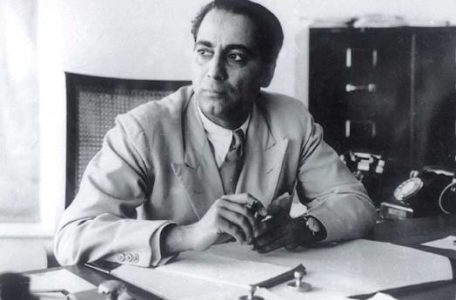
Image – Source
Homi J. Bhabha, regarded as the father of India’s nuclear program, laid the foundation for atomic energy in India.
He was instrumental in setting up the Tata Institute of Fundamental Research (TIFR) and the Bhabha Atomic Research Centre (BARC), which became central to India’s advancements in nuclear technology.
His vision for India was to harness atomic energy not only for defense but also for peaceful purposes like electricity generation and medical applications.
Bhabha’s work in quantum mechanics and cosmic rays further cemented his position as a world-class physicist.
He was a passionate advocate for India’s self-reliance in scientific research and played a key role in securing global recognition for India’s nuclear ambitions. His contributions have had a lasting impact on India’s scientific infrastructure.
Key contributions by Homi J. Bhabha include:
- Architect of India’s atomic energy program.
- Founder of BARC and TIFR.
- Pioneered the use of nuclear energy for peaceful purposes.
- Contributed significantly to quantum theory and cosmic rays research.
- Key figure in India’s atomic self-reliance.
- Played a leading role in shaping India’s defense capabilities.
Bhabha’s foresight and leadership ensured that India established a strong and independent nuclear program.
His legacy lives on in India’s nuclear energy sector, which continues to be a cornerstone of the country’s technological and scientific advancement.
3. A.P.J. Abdul Kalam
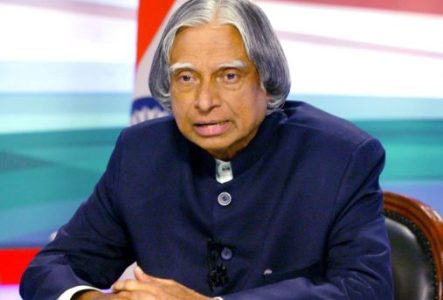
Image – Source
Known as the Missile Man of India, Dr. A.P.J. Abdul Kalam was a towering figure in India’s space and defense technology sectors.
His leadership in the Indian Space Research Organisation (ISRO) and the Defence Research and Development Organisation (DRDO) led to the successful development of India’s missile technology, including the Agni and Prithvi missiles. These achievements solidified India’s defense capabilities on the global stage.
Beyond his technical contributions, Kalam became a beloved national figure, serving as the 11th President of India from 2002 to 2007. His vision for India’s future emphasized the importance of technology and education, especially for young people.
He was a passionate advocate for the development of science and technology as key drivers of the country’s progress.
Key highlights of A.P.J. Abdul Kalam’s career:
- Played a pivotal role in developing India’s missile technology.
- Integral to the success of India’s 1998 nuclear tests (Pokhran-II).
- Worked on ISRO’s first satellite launch vehicle (SLV-III).
- Authored several visionary books on technology and national development.
- Served as the 11th President of India and was known for his humble leadership.
- Inspired millions of young Indians to pursue science and education.
Kalam’s legacy is not only defined by his scientific achievements but also by his deep commitment to empowering future generations.
His dedication to innovation and education has left an indelible mark on India’s progress.
4. Jagadish Chandra Bose
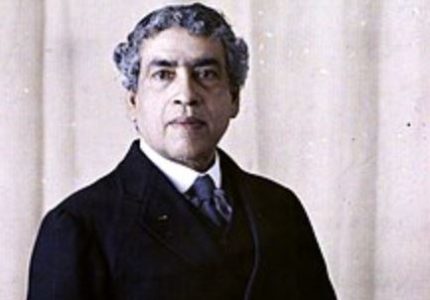
Image – Source
Jagadish Chandra Bose was a trailblazer in radio and microwave physics, making him one of the pioneers of wireless communication technology.
In 1895, he demonstrated the first wireless transmission of electromagnetic waves, laying the groundwork for the development of modern communication systems.
His interdisciplinary approach also led to significant contributions in plant biology, where he demonstrated that plants respond to stimuli, showing similarities between plant and animal tissues.
Bose’s research bridged the gap between physics and biology, and his instruments for studying plant responses were groundbreaking at the time.
His work in biophysics and his interdisciplinary innovations continue to inspire modern scientists.
Key contributions of Jagadish Chandra Bose include:
- Pioneered wireless communication technology.
- Demonstrated the first transmission of radio waves in 1895.
- Developed instruments to study plant responses to stimuli.
- Laid the foundation for the field of biophysics.
- His work influenced the development of radio communication.
- Received global recognition for his research across disciplines.
Bose’s pioneering work continues to influence both physics and biology, and his legacy is one of curiosity, innovation, and relentless scientific inquiry.
5. Vikram Sarabhai
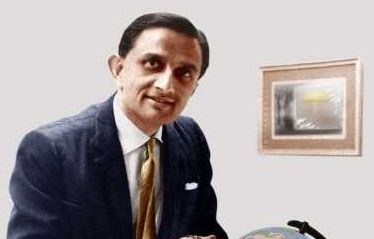
Image – Source
Vikram Sarabhai, known as the father of India’s space program, was a visionary who saw the potential for space technology to improve the lives of people.
He played a key role in establishing the Indian Space Research Organisation (ISRO) and championed the use of satellites for communication, education, and resource management. Under his leadership, India’s first satellite, Aryabhata, was launched in 1975.
Sarabhai was also instrumental in creating numerous institutions to promote scientific research, including the Physical Research Laboratory (PRL).
His vision for using space technology for societal benefits laid the foundation for India’s current successes in space exploration and satellite technology.
Key contributions of Vikram Sarabhai include:
- Founder of ISRO and India’s space program.
- Played a key role in launching India’s first satellite, Aryabhata.
- Championed the use of space technology for education and development.
- Established the Physical Research Laboratory (PRL).
- Promoted international collaborations in space research.
- Laid the groundwork for India’s communication satellite system (INSAT).
Sarabhai’s vision of using space technology for the betterment of society remains a guiding principle for ISRO, ensuring that India continues to be a leader in space exploration.
6. Srinivasa Ramanujan
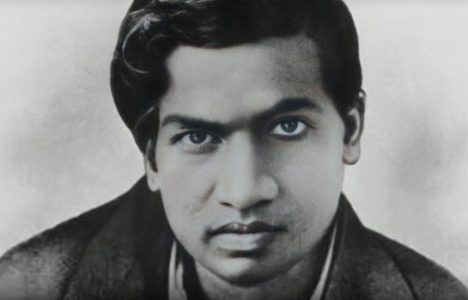
Image – Source
Srinivasa Ramanujan was a mathematical prodigy whose genius revolutionized the field of number theory.
Despite having little formal education, Ramanujan made significant contributions to mathematical analysis, including groundbreaking work on infinite series, continued fractions, and partition functions. His work continues to influence modern mathematics.
Collaborating with renowned mathematician G.H. Hardy at Cambridge, Ramanujan published numerous papers that changed the way mathematicians approached certain problems.
His intuitive grasp of complex mathematical concepts has made him one of the most celebrated mathematicians in history.
Key highlights of Srinivasa Ramanujan’s work:
- Made pioneering contributions to number theory and mathematical analysis.
- Developed the Ramanujan prime and worked on partition functions.
- Known for his work on infinite series and continued fractions.
- Collaborated with G.H. Hardy on groundbreaking mathematical theories.
- Published numerous influential papers despite limited formal training.
- Inspired mathematicians with his deep intuitive understanding of complex problems.
Ramanujan’s legacy in mathematics is one of pure brilliance and inspiration, and his work continues to drive research in various branches of mathematics.
7. Satyendra Nath Bose
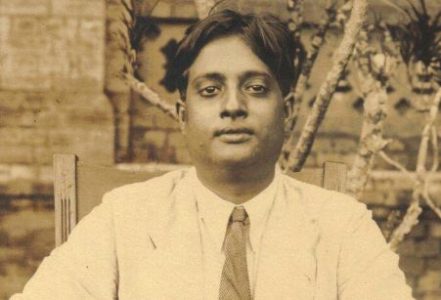
Image – Source
Satyendra Nath Bose is most famous for his work in quantum mechanics, particularly his collaboration with Albert Einstein to develop Bose-Einstein statistics, which paved the way for the discovery of the Bose-Einstein condensate.
His pioneering research into statistical mechanics and quantum theory has had a lasting impact on modern physics.
Bose’s work with Einstein on quantum particles, now called bosons, remains foundational in the field of particle physics.
His contributions to the understanding of the behaviour of particles at the quantum level were groundbreaking and continue to influence ongoing research in physics.
Key contributions of Satyendra Nath Bose include:
- Developed Bose-Einstein statistics with Albert Einstein.
- Laid the foundation for the discovery of the Bose-Einstein condensate.
- Made significant contributions to quantum mechanics and statistical physics.
- Bose particles (bosons) are named in his honour.
- His research forms a core component of modern quantum physics.
- Helped establish scientific research in India.
Bose’s work continues to inspire physicists globally, particularly in the field of quantum mechanics, and his discoveries remain central to the study of particle physics.
8. Meghnad Saha
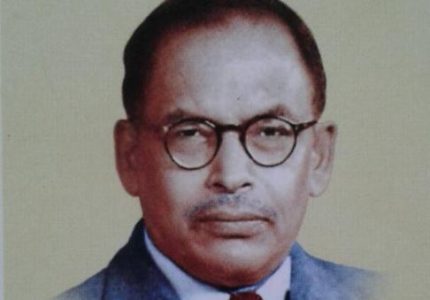
Image – Source
Meghnad Saha is best known for his development of the Saha ionization equation, a key tool used in astrophysics to explain the chemical and physical properties of stars.
His research played a critical role in advancing the understanding of stellar atmospheres and the processes that occur within stars.
Saha’s work extended beyond theoretical physics; he was also a leader in scientific institutions, helping to establish the Saha Institute of Nuclear Physics in Kolkata. His ionization equation remains one of the most important tools in astrophysics.
Key highlights of Meghnad Saha’s contributions:
- Developed the Saha ionization equation for astrophysics.
- Contributed to understanding the chemical properties of stars.
- Played a significant role in space science and astrophysics.
- Established the Saha Institute of Nuclear Physics in Kolkata.
- His work is still widely used in astrophysics today.
- Served as a key scientific leader in post-independence India.
Saha’s groundbreaking work on stellar atmospheres remains a fundamental part of astrophysics, helping scientists explore the mysteries of stars and the universe.
9. Prasanta Chandra Mahalanobis
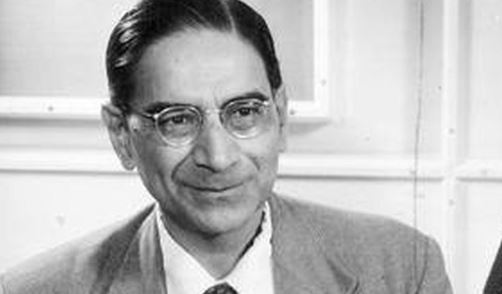
Image – Source
Prasanta Chandra Mahalanobis was a renowned statistician who developed the Mahalanobis distance, a critical tool used in multivariate statistics.
His contributions to statistical theory and large-scale surveys were foundational to the development of modern statistics in India.
Mahalanobis also played a key role in India’s economic planning, helping shape policies during the country’s early years of independence.
He established the Indian Statistical Institute (ISI), which became a hub for statistical research and education in India.
Key contributions by P.C. Mahalanobis include:
- Developed the Mahalanobis distance for statistical analysis.
- Founder of the Indian Statistical Institute (ISI).
- Played a key role in India’s economic planning and development.
- Applied statistical methods to large-scale surveys and censuses.
- Contributed to agricultural and industrial planning in India.
- Innovated new methods in multivariate analysis.
Mahalanobis’ influence extended beyond statistics into economic planning, helping shape India’s development strategy through data-driven insights.
10. Har Gobind Khorana
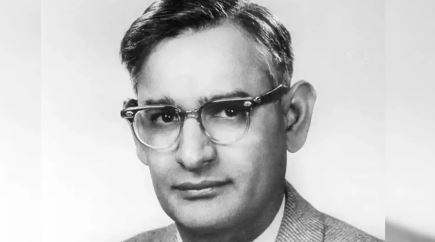
Image – Source
Har Gobind Khorana was an Indian-American molecular biologist who won the Nobel Prize in Physiology or Medicine in 1968 for his work on deciphering the genetic code.
His groundbreaking research showed how the genetic code controls protein synthesis, which was instrumental in advancing the field of molecular biology.
Khorana’s work included synthesizing the first artificial gene, which laid the groundwork for genetic engineering.
His contributions continue to influence biotechnology, with applications ranging from medicine to agriculture.
Key highlights of Har Gobind Khorana’s contributions:
- Won the Nobel Prize in Physiology or Medicine in 1968.
- Played a pivotal role in deciphering the genetic code.
- Synthesized the first artificial gene.
- Made significant contributions to molecular biology and genetics.
- His research has had lasting impacts on biotechnology.
- Pioneered synthetic biology and gene synthesis techniques.
Khorana’s work revolutionized molecular biology and genetics, and his discoveries continue to have a profound impact on modern biotechnology.
Conclusion
In conclusion, the contributions of these top 10 Indian scientists have not only advanced the fields of physics, space science, biology, mathematics, and nuclear technology but have also shaped the global scientific community.
Their pioneering research, discoveries, and innovative thinking continue to inspire new generations of scientists both in India and worldwide.
From C.V. Raman’s groundbreaking Raman Effect to Har Gobind Khorana’s work on the genetic code, these visionaries have left an indelible mark on humanity’s understanding of the world. Their legacies remind us of the power of science to transform societies and drive progress.
FAQs
Who was the first Indian scientist to win a Nobel Prize?
C.V. Raman was the first Indian to win the Nobel Prize in Physics in 1930 for his discovery of the Raman Effect.
How did A.P.J. Abdul Kalam contribute to India’s missile technology?
A.P.J. Abdul Kalam was instrumental in developing India’s ballistic missile technology, including the Agni and Prithvi missiles.
What is the significance of the Saha Ionization Equation?
Meghnad Saha’s ionization equation helps scientists understand the chemical composition and physical state of stars.
What was Srinivasa Ramanujan’s major contribution to mathematics?
Srinivasa Ramanujan made groundbreaking contributions to number theory, including partition functions and infinite series.
What was Vikram Sarabhai’s role in ISRO?
Vikram Sarabhai is considered the father of ISRO and was instrumental in launching India’s space program.
What did Homi J. Bhabha do for India’s nuclear program?
Homi J. Bhabha established the foundations for India’s nuclear energy program, focusing on peaceful nuclear development.
Who is Satyendra Nath Bose, and what are bosons?
Satyendra Nath Bose was an Indian physicist whose work with Albert Einstein led to the discovery of Bose-Einstein statistics, which described the behaviour of bosons.

